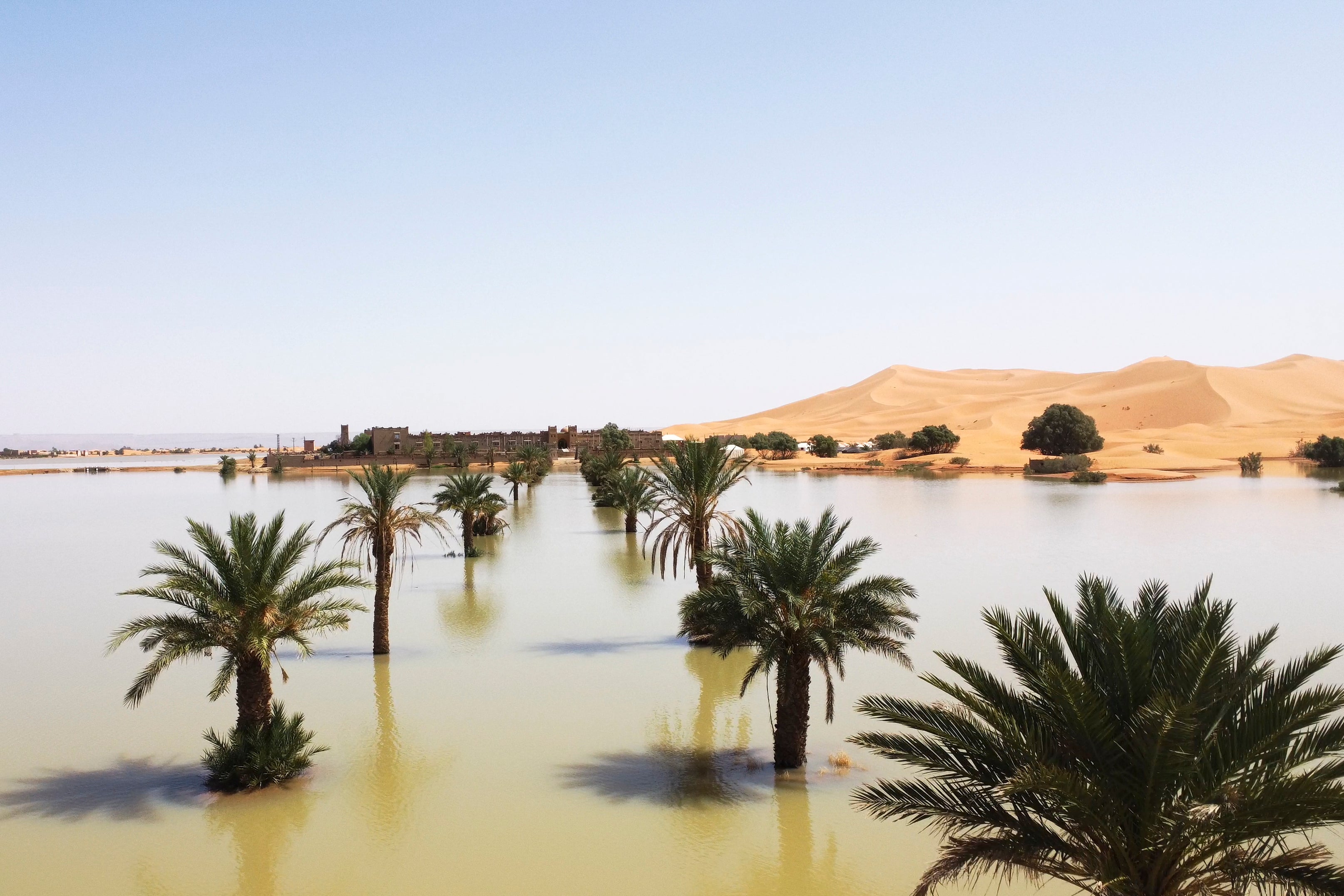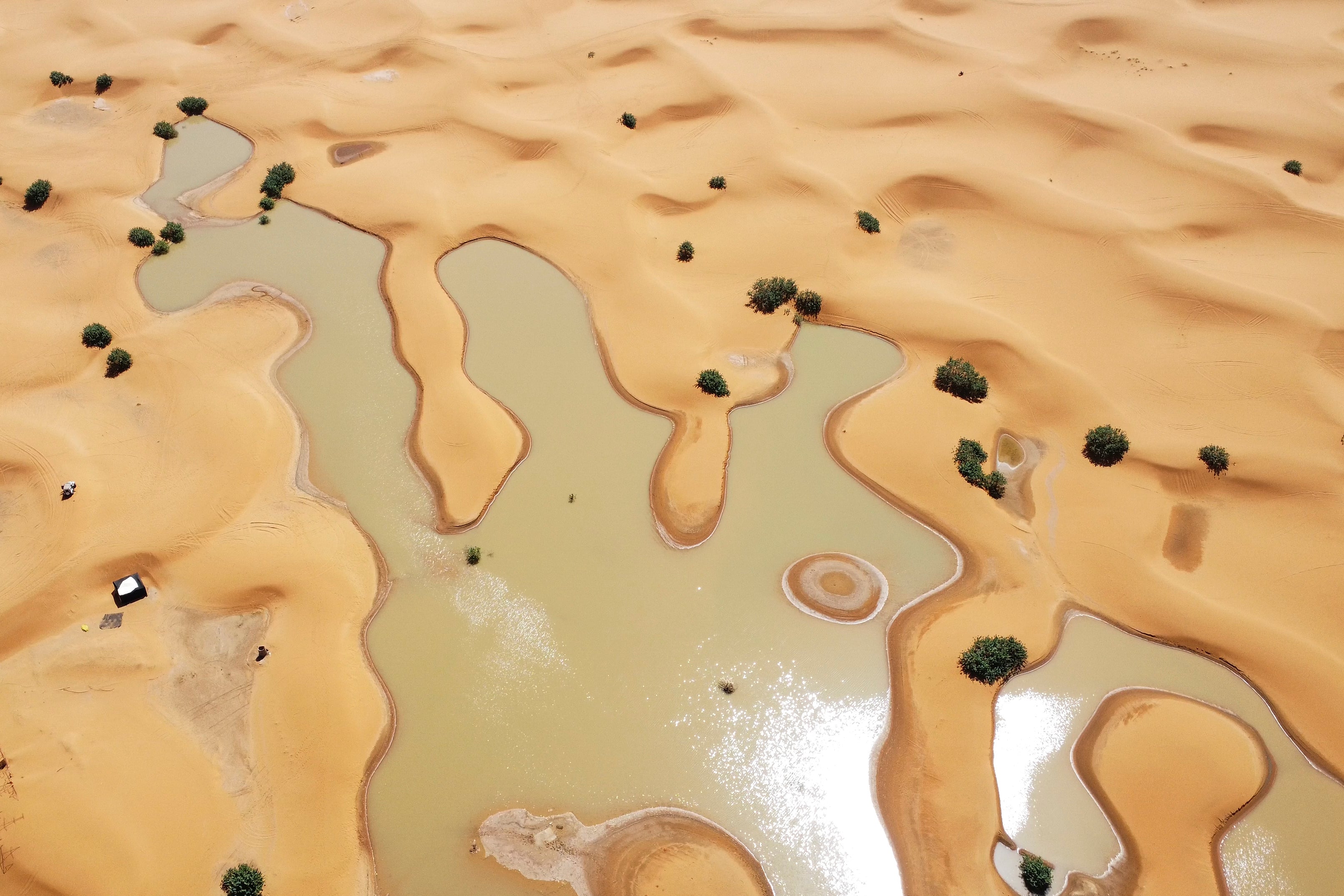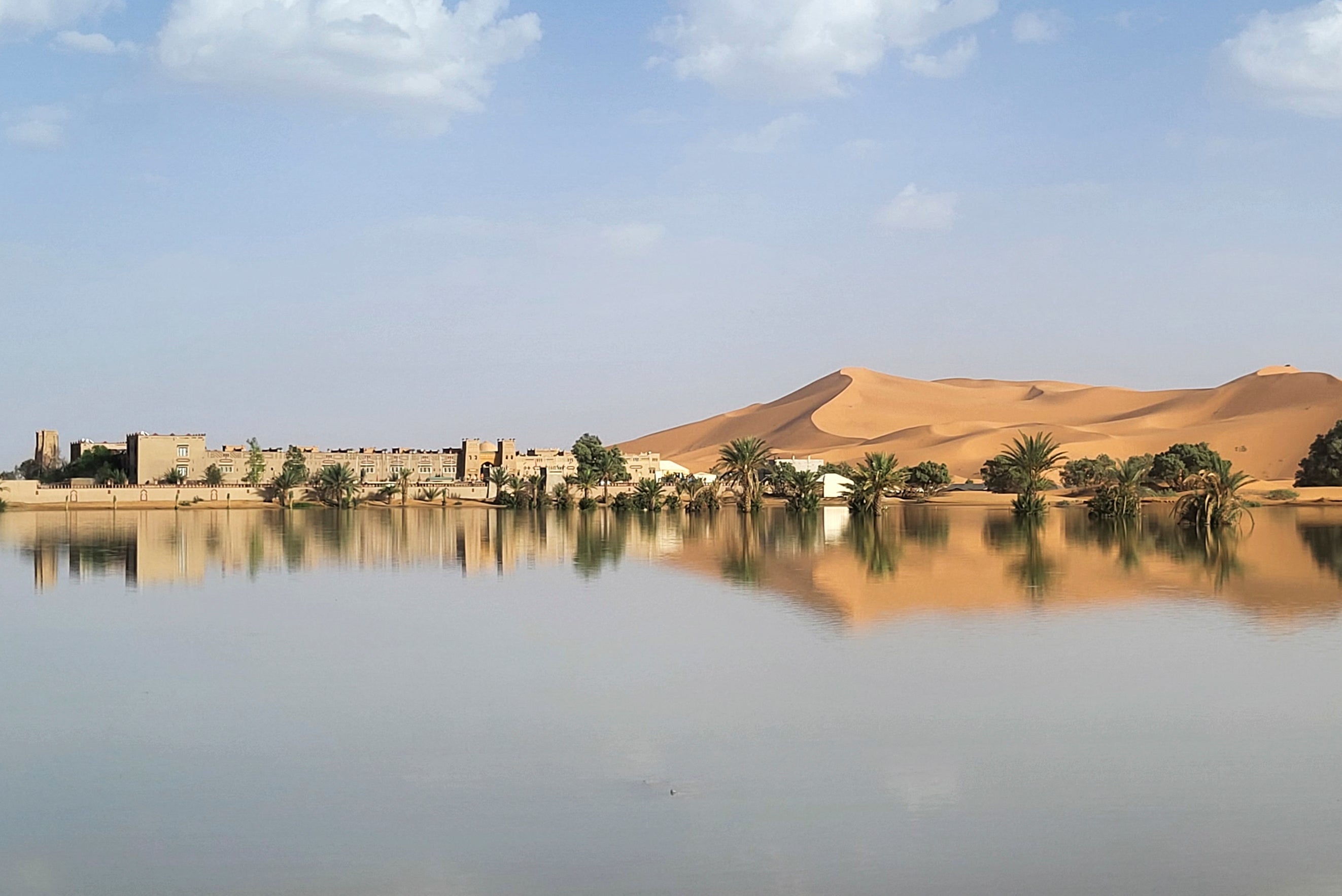Flooding hits Sahara Desert after extremely rare rainfall
Storms provided more rainfall than had been seen in decades

Your support helps us to tell the story
From reproductive rights to climate change to Big Tech, The Independent is on the ground when the story is developing. Whether it's investigating the financials of Elon Musk's pro-Trump PAC or producing our latest documentary, 'The A Word', which shines a light on the American women fighting for reproductive rights, we know how important it is to parse out the facts from the messaging.
At such a critical moment in US history, we need reporters on the ground. Your donation allows us to keep sending journalists to speak to both sides of the story.
The Independent is trusted by Americans across the entire political spectrum. And unlike many other quality news outlets, we choose not to lock Americans out of our reporting and analysis with paywalls. We believe quality journalism should be available to everyone, paid for by those who can afford it.
Your support makes all the difference.Rare rainfall has hit some of the most arid places on earth.
The deluge has left blue lagoons of water amid the palm trees and sand dunes of the Sahara desert, nourishing some of its most drought-stricken regions with more water than many had seen in decades.
Southeastern Morocco's desert rarely experiences rain in late summer.
The Moroccan government said two days of rainfall in September had exceeded yearly averages in several areas that get an average of less than 250 millimeters (10 inches) annually, including Tata, one of the areas hit hardest. In Tagounite, a village about 450 kms (280 miles) south of the capital Rabat, more than 100 mm (3.9 inches) was recorded in a 24-hour period.
The storms provided more rainfall than had been seen in decades, leaving striking images of bountiful water gushing through the Saharan sands amid castles and desert flora.
In desert communities frequented by the many tourists who visit the Sahara, 4x4s motored through the puddles and residents surveyed the scene in awe.
“It’s been 30 to 50 years since we’ve had this much rain in such a short space of time," said Houssine Youabeb of Morocco's General Directorate of Meteorology.

Such rains, which meteorologists are calling an extratropical storm, may indeed change the course of the region's weather in months and years to come as the air retains more moisture, causing more evaporation and drawing more storms, Youabeb said.
Six consecutive years of drought have posed challenges for much of Morocco, forcing farmers to leave fields fallow and cities and villages to ration water consumption.

The bounty of rainfall will likely help refill the large groundwater aquifers that lie beneath the desert and are relied upon to supply water in desert communities. The region's dammed reservoirs reported refilling at record rates throughout September. However, it's unclear how far September's rains will go toward alleviating drought.
Yet water gushing through the sands and oases left more than 20 dead in Morocco and Algeria and damaged the farmers' harvests, forcing the government to allocate emergency relief funds, including in some areas affected by last year's earthquake.
NASA satellites showed water rushing in to fill Lake Iriqui, a famous lakebed between Zagora and Tata that had been dry for 50 years.